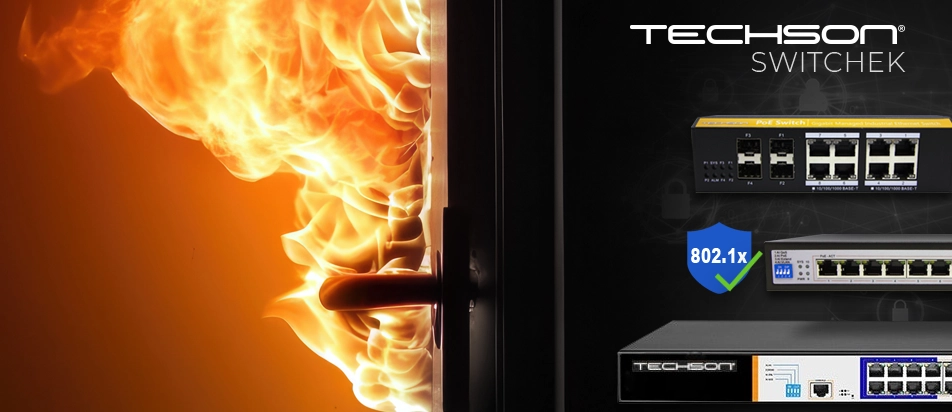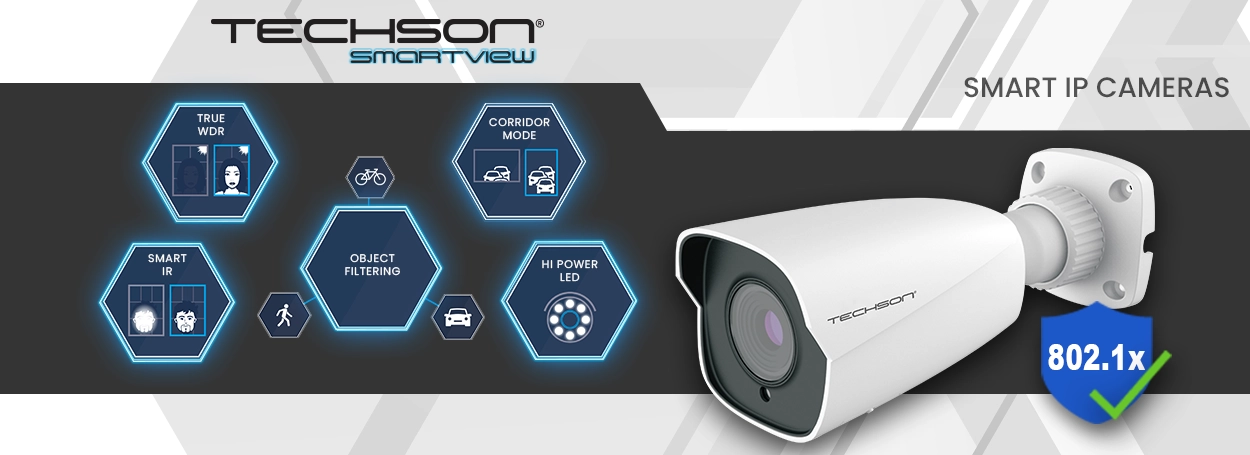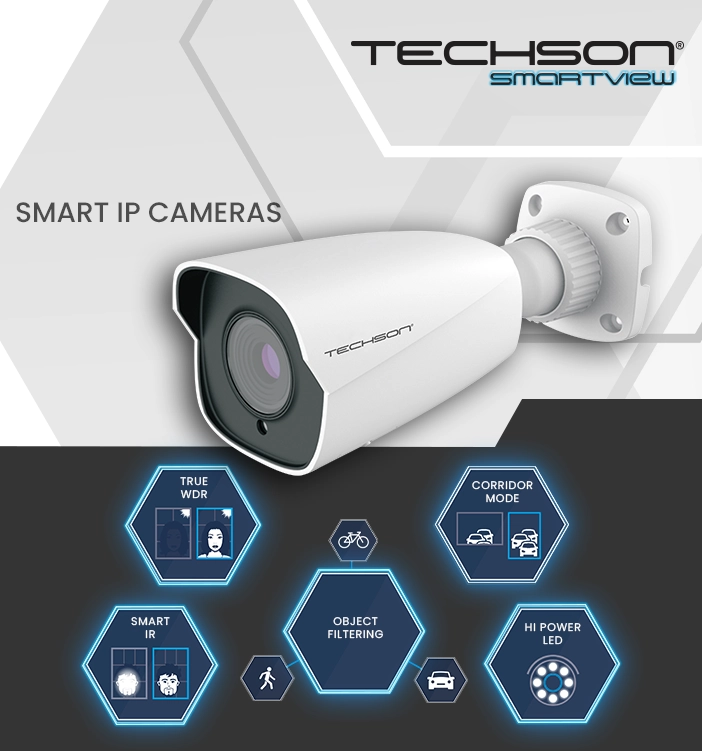To protect their valuables, people typically lock their doors when leaving their home. So why leave a network unprotected? Neglecting security measures can lead to significant risks, as unsecured endpoints pose a considerable threat. The Techson range of secured switches provides an effective solution to this issue.

Security devices connected to a system are usually located at the physical boundaries of the network. Surveillance devices, cameras in particular, are often installed at locations which are publicly accessible. As these devices are connected to the network in an active and permanent manner; they increase the risk of unauthorized access to the system.
Attackers often try to break into a network through the cables of the surveillance camera system, or they might as well remove the camera and try to obtain access to the network by attaching a laptop to the endpoints exposed this way. If there is no access control on a network, the information accessible to an unauthorized user will only depend on the "right software" used. Sensitive information can also be exposed, as it is not merely the security devices that become accessible, but all network devices or resources as well, including the router, servers or the access control system. Free endpoints include all wall mounted LAN sockets, a freely accessible switch or simply an internet cable coming from a CCTV camera.
Another option for an attacker is the use of "bridging" device to carry out a so-called man-in-the-middle attack.


There are a number of ways for preventing such attempted attacks:


The intelligent cameras of the Techson SmartView series support authentication based on a user name and a password. This is the 802.1x protocol.
IEEE 802.1x port-based network access control provides secure authentication to the devices connected to the network. Any device trying to connect to the network will be automatically rejected if it fails to comply during the authentication process. The 802.1x network differs from a home network in terms of an important aspect, namely in that it has an authentication server, called the RADIUS server. This verifies user data to make sure that the given user is an active member of the given organization, and it grants access to users on various levels of authorization, depending on the rules of the network. In our case the users are the cameras themselves, or other connected devices.
IEEE 802.1x is a standard issued by the Institute of Electrical and Electronics Engineers Standards Association. This organization within IEEE, establishes standards for a wide range of industries, including the energy sector, medical biology, health care, information technology, telecommunication, transportation, nanotechnology or information security.
The application of standards, which serve for the protection of network endpoints, has also appeared in the range of devices used by small-sized companies or households. These were formerly used only by large organisations, giant enterprises, universities and hospitals, but driven by the reasonable demand for cyber security, they are nowadays used by small companies and private persons as well.
The 802.1x protocol contains three major components:
